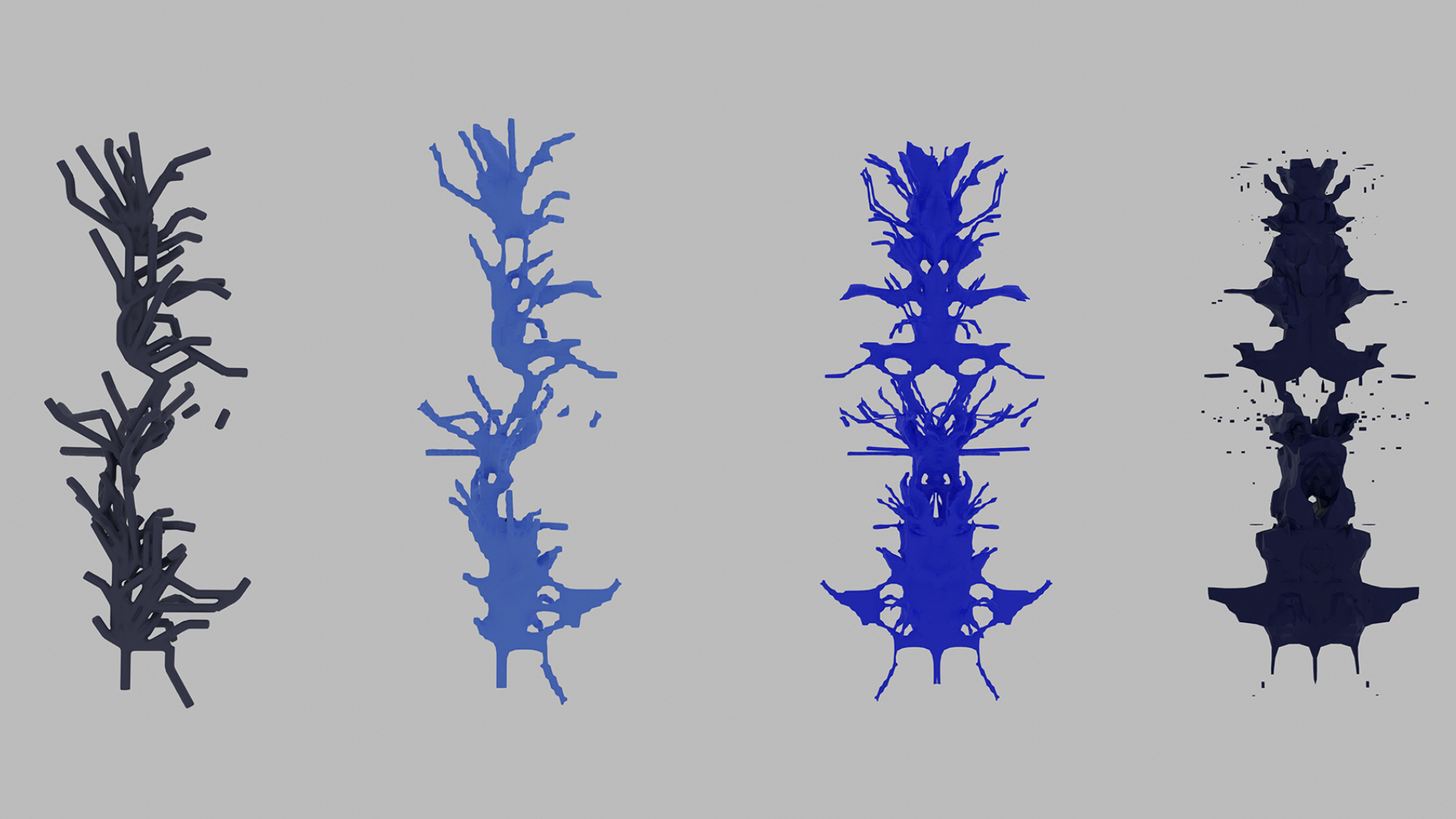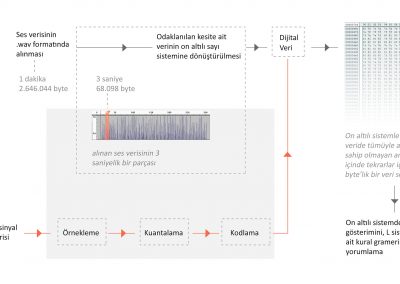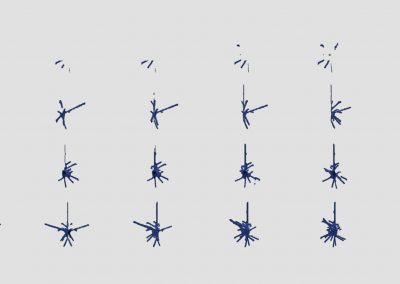
Ses Verilerinde Form Arayışı: L-Sistem Tabanlı Bir Model
Bu çalışma, Lindenmayer Sistemleri’ne dayanan üç boyutlu formların oluşturulmasında ses verilerinin kullanılmasına yönelik bir çerçeve sunmaktadır. Biyolojik olarak esinlenilen büyüme sürecinde kullanılan L-Sistem gramerleri ile ses genliği arasında ortak bir yaklaşım oluşturabilmek amacıyla her iki veri de on altılı sayı sistemi (hexadecimal) ile temsil edilerek ele alınmıştır. Çalışma dört ana aşamadan oluşmaktadır. İlk olarak dijital ortama alınan ses verisinin sayısal gösteriminde on altılı sayı sistemi (heksadesimal) kullanılmıştır. Sayısal olarak gösterimi gerçekleştirilmiş ses verisinde kendi içerisinde mikro ölçekte tekrarlar içeren bir kısım seçilerek, bu parçadaki örüntü ve yinelemeler, on altılı sistemdeki karşılıkları kullanılarak tespit edilmiştir. 1 byte’a karşılık gelen ikili karakter dizisi ya da yinelenen karakter dizilerinin oluşturduğu gruplar olarak kullanılan veri parçasındaki sayısal ifadeler, L-Sistem kurallarını oluşturan gramerlerle eşleştirilmiştir. Son aşamada L-Sistem kuralları kullanılarak hazırlanan üç boyutlu modelde görsel olarak takip edilebilir bir büyüme simülasyonu ve fiziksel olarak prototiplenebilir bir model oluşturmak hedeflendiği için on altılı sistemde ifade edilen verinin L-Sistem grameri ile temsil edilmesi işlemi, deneysel bir sürece dayanmaktadır. Çalışma sonucunda işitsel, görsel ve dokunsal olarak algılanabilen bir veri dönüşümünün, devamlı olarak gelişen ve değişen bir büyüme sürecinde incelenebilmesi hedeflenmektedir. Hazırlanan üç boyutlu model algoritması, ses verisi dahilinde büyüyen ve şekillenen yeni modellerin oluşturulması için aynı zamanda görsel bir simülasyon altlığı sunmaktadır. Fiziksel olarak formun incelenebilmesi ve duyular arası bir karşılaştırma yapılabilmesi için, görsel büyüme simülasyonunun farklı aşamalarından ve üretilen yeni nesillerden elde edilen modeller üç boyutlu yazıcı ile üretilmiştir.
Form Explorations in Audio Data: An L-System-Based Model
The study consists of four main stages: First, we used the hexadecimal number system (hexadecimal) in the digital representation of the digitalized audio data. In the digitally displayed audio data, a part containing micro-scale repetitions was selected and the patterns and repetitions in this part were determined by using their equivalents in the hexadecimal system. Numerical expressions in a piece of data used as binary strings corresponding to 1 byte or groups of repeating strings are matched with grammars that make up the L-System rules. In the last stage, we create a visually traceable growth simulation with the three-dimensional model prepared using the L-System rules. The process of representing the data expressed in the hexadecimal system with the L-System grammar is based on an experimental process. Audio visualizations, which are prepared quite easily by using various animation programs or modeling programs, are based on changing the parameters of an existing model synchronously with the sound by using the height or frequency spectrum in the sound. This study, since it is aimed to create an L-System-based model directly with the sound data, it is focused on very small parts in the sound data.
A procedural three-dimensional modeling process was followed to create new generations based on the representation of the created model. As a result of the study, it is aimed to examine a data transformation that can be perceived as auditory, visual, and tactile in a constantly developing and changing growth process. The prepared three-dimensional model algorithm also provides a visual simulation base for creating new models that grow and shape within the sound data. Models obtained from different stages of visual growth simulation and new generations will be produced with a three-dimensional printer.
© 2021 Istanbul Technical University Graduate School, Department of Informatics, Architectural Design Computing Program. All Rights Reserved


